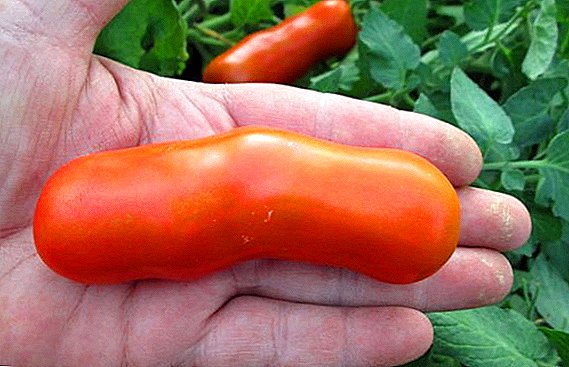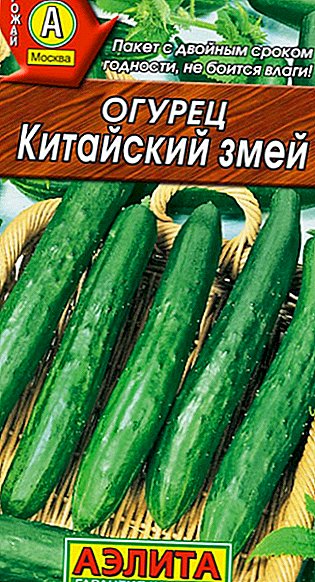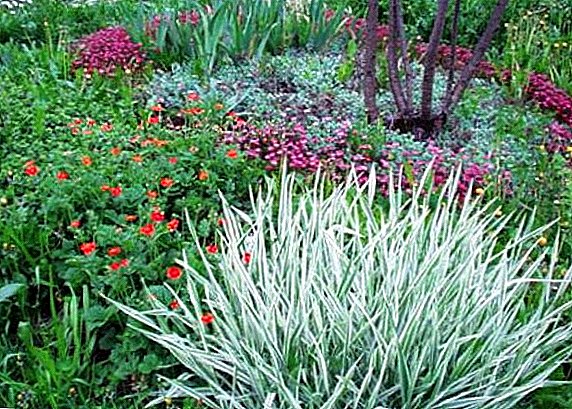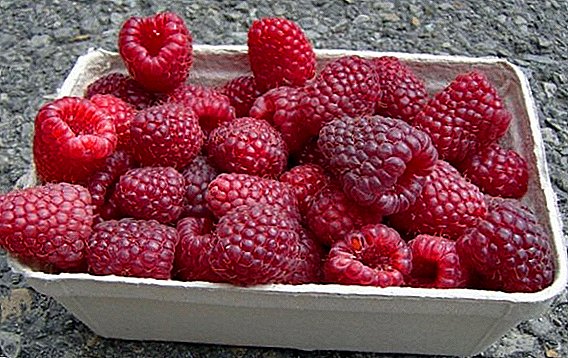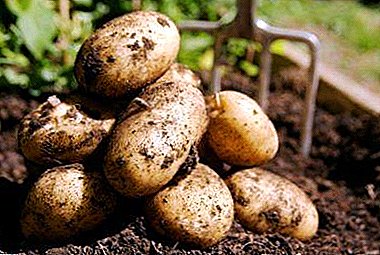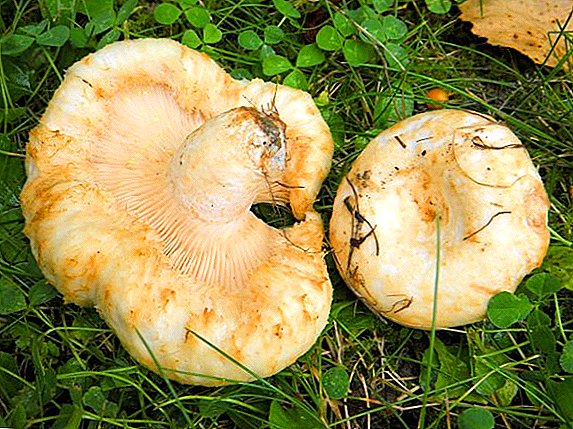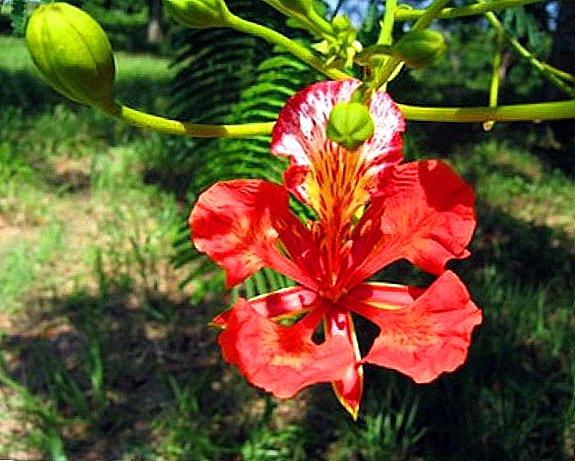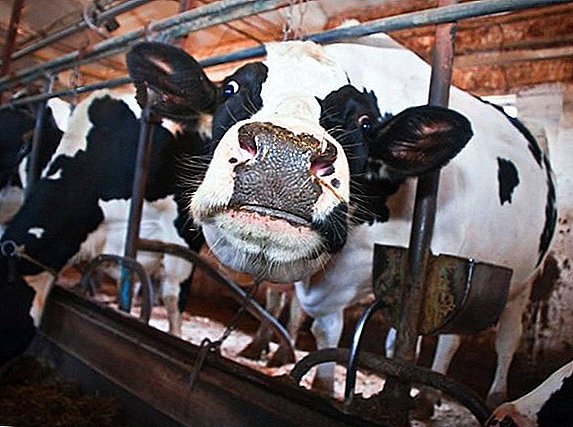 A significant factor that can make adjustments to the routine maintenance of dairy cattle is seasonality. If everything is more or less clear with the peculiarities of the summer housing of cows, then the coming wintering raises a number of questions, especially for beginning farmers.
A significant factor that can make adjustments to the routine maintenance of dairy cattle is seasonality. If everything is more or less clear with the peculiarities of the summer housing of cows, then the coming wintering raises a number of questions, especially for beginning farmers.
Preparing a barn for winter cold
Preparing for a long winter period usually begins with work in the barn, which must be properly equipped:
- blow out the cracks and cracks in the walls of insulating material (not less than 30%);
- to warm the doors and windows so that they are tightly closed: for this you can use straw mats, old boards, roofing material and additional plating;
- to inspect the ceiling part, if necessary, repair and insulate with mineral wool;
- to create the necessary electrification with the help of incandescent incandescent bulbs or LED lighting devices, possessing a long service life;
- make thorough general cleaning with disinfection of the stall, drinking bowls, feeders, partitions.
We advise you to read about how to build a barn for cows with your own hands.
Carrying out the necessary insulating manipulations, it is important to consider the future temperature and wet conditions (microclimate) in the room. A barn prepared for winter should be well protected from the cold and at the same time be ventilated regularly.
Primary requirements:
- air temperature should not fall below +4 ° C, the best option would be +8 ° C;
- air flow should be maintained in the amount of 17 cubic meters per hour for every centner of adult cows, from 50 cubic meters per hour for young animals;
- air traffic speed - about 0.5 m / s;
- air humidity - 50-60%.

Care for a cow in winter
The maintenance of cows in the winter is a very troublesome matter and has its own distinctive features. However, if you take into account all the important nuances, any cold will not cause problems to either the cattle or the owner.
Litter
Before laying a warming mat in the barn, you should take care of a quality floor covering. It is desirable that the material was made of natural wood or, in extreme cases, of concrete.
Important! Some farmers additionally contribute peat to straw. However, the component has a significant disadvantage - it strongly pollutes the cow's udder, which can serve as a favorable environment for pathogens.Covering litter should consist of chopped into small pieces of straw (about 15 cm) with an optimal flow rate for each individual from 2.5 kg. In its heat-saving and moisture-absorbing properties, this coating is significantly superior to other materials: sawdust, wood shavings or leaves.

Organization of stall maintenance
The almost constant presence of cows in a stall on a leash makes it necessary to fulfill certain requirements:
- The cow should be tied with one end of the rope to the trough, the other - to her collar. Thus, the leash will be easily removed if necessary. The main thing is that the length does not interfere with the animals to freely get to the waterers and feeders.
- In winter, the barn can be cleaned in two ways: manure is harvested daily and a new litter is spread, the second is that manure is not harvested until spring, and a new layer of dense bedding is applied on top of it. The second option is well suited for farms located in regions with a harsh winter climate - a formed multi-layer cushion will warm the cattle until the end of winter.
- Every day, the cows stall need to be cleaned and, in some cases, in water procedures, which, together with massage, help to improve blood circulation in the skin, increase the productivity of sweat and sebaceous glands, and increase the appetite in animals. Manipulation is carried out using a hard brush and warm water, always an hour before milking or one hour after.
Did you know? Each cow on the nose has an individual pattern that can be compared with the fingerprints of a person. Farmers in one of the states of the USA successfully use this feature when searching for stolen cows.
Walking outdoors
Regular walking of livestock in the winter helps to keep the muscles of animals in the right tone. If the cows are constantly kept in a stall, prevent active movements and do not let them bask even under the weak sun - they become apathetic, do not show sexual interest and lose their appetite.  In animals, bones can also soften, which can later lead to injuries of the limbs in adults, and in calves - to rickets.
In animals, bones can also soften, which can later lead to injuries of the limbs in adults, and in calves - to rickets.
Some important recommendations:
- it is necessary to accustom to frosty walks of animals gradually, since autumn;
- the pen should be built near the cattle shed, with an area of approximately 15-20 square meters. m, inside which to place fresh pine branches and separate feeders for feeding part of the roughage;
- livestock need to walk daily for 2-3 hours in good weather, without rain or snowstorms;
- The yard should be lined with thick bedding, as you get wet it is possible to add a fresh layer of hay or straw to the covering so that the top layer always remains dry.
Important! The farmer needs to teach the cows to strictly adhere to the daily regimen, at the same time they have to eat, walk, drink water and take water procedures, since any violation of the established routine may adversely affect productivity.
Water and diet for cows in winter
In winter, cattle spend significantly more energy, so it is important for the farmer to form a more balanced, nutritious menu and provide them with the right amount of warm, purified water.
What to feed
Feed cattle relies three times a day with an equal interval between meals.  An approximate diet looks like this:
An approximate diet looks like this:
- hay from perennial grasses (part can be replaced with straw);
- potato tubers, pumpkin, carrots;
- feed hay;
- special soy protein feed.
From time to time the menu is diluted with silage and chopped root vegetables. Grain feed should be issued in the morning and at lunch, coarse - in each feeding. One individual for 1 day for normal functioning must eat from 30 to 40 kg of total feed.
Find out what grass cows eat, what feed additives are needed for cattle, and what to do if a cow does not eat well.
Table of the approximate winter ration for cows (in kg) with a weight of 400-500 kg and an annual milk yield of at least 3000 kg for several days:
| Special feed | 8 | 10 | 12 | 14 | 16 |
| Hay natural land or seeded crops | 6 | 6 | 7 | 8 | 8 |
| Dry corn stalks | 2 | 2 | 2 | 2 | 2 |
| Silo from forbs and garden crops | 10 | 10 | 10 | 10 | 10 |
| Stern beets and pumpkin | 10 | 10 | 13 | 14 | 18 |
| Vegetable cleaning | 1 | 1 | 1 | 1 | 1 |
| Concentrates | 0,5 | 0,6 | 1,8 | 2 | 2,5 |
| Salt | 0,52 | 0,050 | 0,008 | 0,077 | 0,087 |
 Diversify the diet in the cold can be such products:
Diversify the diet in the cold can be such products:- Chaff - small parts of the stem and spike of grain crops, which remained after threshing. Immediately before issuing the product must be sieved and moistened. Burned, clogged, moldy - to reject.
- Twig feed - brooms of birch, aspen, acacia, willow, poplar, maple. The nutritional value of such branches is very similar to straw. However, it is not recommended to give such brooms constantly - not more than a month, then take a break for 10-15 days.
- Straw cutting of winter crops. Before issuing the product should be moistened with salted warm water. "Dish" should always be fed to cows in a freshly prepared form, so its preparation should begin 15-20 minutes before consumption.
- Straw of cereal crops (barley, oatmeal) is served to the cookers unchanged, and the spring straw is better to be pre-ground.
- Hay, haylage.
Possible mistakes:
- double feeding and violation of the daily regime;
- a sharp transition from one type of feed to another;
- excessive feeding with concentrates can lead to an increase in acidity in the gastrointestinal tract and poor digestibility of vitamins.
Read more about how and what to feed a cow in winter.
How to water
In addition to high-quality and balanced feeding, cows, especially during the winter period, need clean and heated drinking. One individual during the day should drink at least 5 buckets of clean water, which, just before pouring into the drinker, must be warmed to room temperature using special tanks or systems previously installed in the barn. 
Vitamins
An important role in the preparation of a good balanced diet is vitamin and mineral supplements.
Without timely replenishment of the body, cattle can develop negative states:
- productivity and reproduction will decrease;
- growth and correct weight gain will worsen;
- hidden and overt chronic diseases will escalate.
There may be such manifestations: increased excitability, aggression, confused heart rhythm, shortness of breath, anemia.
Did you know? Cows have a very good memory. They aggressively treat people who once hurt them, and with love - farmers who constantly care for them. People these animals are distinguished visually, by smell, voice, color of clothing.A variety of vitamin supplements for replenishing the winter diet are presented on the modern farmer market, the best of which are:
- In the form of injections - "Eleovit", "Tetravit" (complexes containing vitamins A, B, E, folic acid, sulfur, nicotinic acid).
- "Felutsen" - food supplement that increases the level of selenium, vitamins, iron and iodine.
- "BMVD" (protein mineral and vitamin supplements). Ingredients: crude protein, fiber, crude fat, lysine, crude ash, sugar, methionine, cystine. The drug must be mixed with feed.
 The winter months for animal husbandry can be compared with the real ordeal, since during this period the cows require much more attention and care. But for a hardworking farmer, this will not be a serious problem - his patience, efforts and costs will very quickly pay off in full.
The winter months for animal husbandry can be compared with the real ordeal, since during this period the cows require much more attention and care. But for a hardworking farmer, this will not be a serious problem - his patience, efforts and costs will very quickly pay off in full.

